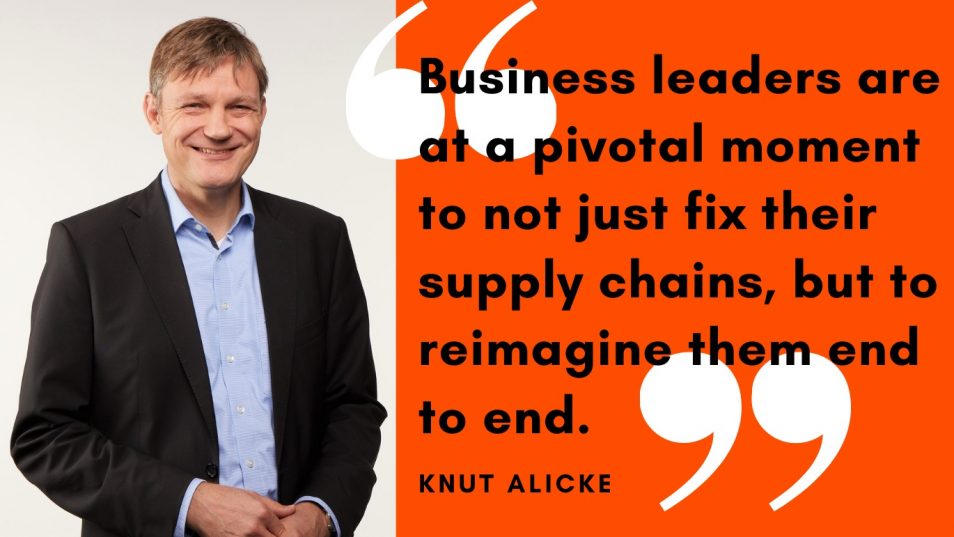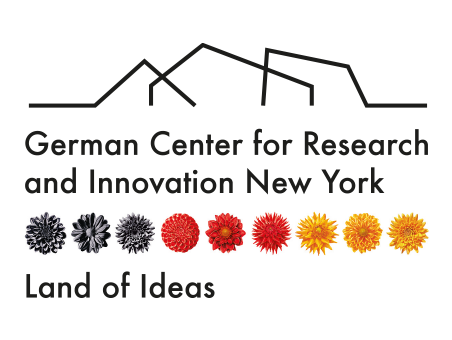The Supply Chain Reimagined

Amidst product shortages, trade wars and intense debate about nearshoring and regionalization, we sit down to chat with Knut Alicke, a Partner at McKinsey & Company Stuttgart and Head of Supply Chain Europe, about supply chain resilience, risk forecasting and what went wrong in the pandemic.
DWIH: Hi, Mr. Alicke. Thanks for taking some time to help us understand what’s happening in the global supply chain right now. Let’s get to it!
Consumers across the world are facing shortages on microchips, lumber, chlorine, appliances and more. Can you contextualize how this happened?
Alicke: The world has experienced no shortage of shocks to supply chains – but until the COVID-19 pandemic, most of these disruptions, with the exception of the global financial crisis, were industry specific. We’ve seen flooding disrupt the electronic components supply chain, hurricanes disrupting the chemicals industry, or earthquakes disrupting the automotive sector just to name a few.

The COVID-19 pandemic exposed existing challenges across business operations and thrust an organization’s ability to adapt to dramatic shifts in supply and demand into the spotlight.Knut Alicke
Global production networks that took shape to optimize costs and efficiency often contain hidden vulnerabilities—and external shocks exploit those weaknesses. The COVID-19 pandemic exposed existing challenges across business operations and thrust an organization’s ability to adapt to dramatic shifts in supply and demand into the spotlight. However, even before the COVID‑19, a multitude of events in recent years temporarily disrupted production at many companies. All of this is occurring against a backdrop of changing cost structures across countries and growing adoption of revolutionary digital technologies in global manufacturing.
In “Risk, Resilience, and Rebalancing in Global Value Chains,” McKinsey research reveals that companies experience at least one month of disruption every 3.7 years, eliminating 45% of one year’s EBITDA over a decade.
Based on four classifications of shocks, industries most at risk of supply chain disruption losses include aerospace (commercial), automotive, mining and petroleum products. The research also found that a single severe shock causing a 100-day disruption could wipe out an entire year’s earnings or more in some industries.
DWIH: So there’s a lot more at play than just COVID! Moving back to the pandemic, however: how do you forecast demand in the context of an unforeseen global crisis?
Alicke: Forecasting, planning and scheduling deliveries have become a much bigger challenge. Traditional forecasting algorithms are no longer sufficiently flexible for the rapidly changing levels of demand and supply, and workflow challenges remain. It is important to even stop automatic forecasting and replenishment systems right after a disruption and take over manual control. Advanced analytics and machine learning algorithms help to get back on track quickly with self-learning / adaptive forecasting – many retailers leveraging those algorithms did benefit a lot and ensured high availability.
To model structural shifts in demand, it is important to build demand models that consider forward looking factors to sense the demand. For example, for a food manufacturer it is important to consider the opening and closing of different channels, near to real time data on traffic in stores or searches, listings and click development on online platforms: Demand for portfolio of professional products is driven by the number of open restaurants or canteens whereas demand for the consumer portfolio is driven by structural shifts to in-home consumption that is served by online stores or supermarkets. Besides, market shares, price surges and (de-)listings are important factors to consider. In other industries, demand drivers could be GDP developments, investment activities or recoveries of down-stream customers.
Especially in B2B, it is important to challenge the demand and orderbook of the customers as it might be inflated or reflect unrealistic assumptions. The current semiconductor crisis could to a certain extend have been predicted in the summer months as an example.
DWIH: How are companies now adapting their supply chain ecosystems to make them more resilient?
Alicke: The frequency of disruptions is increasing over time and across all industries, necessitating resiliency measures to mitigate potentially significant economic costs. Not all resiliency levers may be suited for all industries, but every industry can benefit from implementing a suite of resiliency measures best suited to its unique characteristics.
Organizations need a new approach to manage risk and build resiliency, and there are a variety of options companies can pursue to strengthen value chain resilience in response to risk and minimize the growing cost of disruption, including opportunities arising from new technologies; strengthening risk management capabilities and improving transparency; building redundancy; reducing product complexity; and improving the financial and operational capacity to respond to shocks and recover quickly from them.
Companies are also taking a closer look at the suppliers in their value chain in order to gain a better understanding of their production footprint and financial stability. In fact, in a McKinsey survey of supply chain executives, two-thirds of respondents reported asking key suppliers whether they have business continuity plans in place, and an overwhelming 93 percent reported that they plan to take steps to make their supply chains more resilient, including building in redundancy across suppliers, nearshoring, reducing the number of unique parts, and regionalizing their supply chains.

Supply chain risk ultimately lies at the cross-section of vulnerability and exposure.Knut Alicke
DWIH: How should “risk” be redefined from the pre- to post-COVID eras?
The majority of companies today are not able to quantify their risk exposure or measure their resilience or have a risk KPI. That is also why it is so difficult to make a business-case based decision on when and how to invest in risk reduction. MGI research shows that a single prolonged production-only shock would wipe out between 30 and 50 percent of one year’s EBITDA for companies in most industries.
Supply chain risk ultimately lies at the cross-section of vulnerability and exposure. Operations risk-management practices that view risk as arising mainly from discrete sources of shock or specific elements of supply-chain design, such as geographic footprint, are too narrow to be sufficient in today’s environment. The most advanced businesses will model the size and impact of various shock scenarios to determine the actions they should take to rebuild their supply chains and mitigate future risks.
Companies therefore need to scrutinize the places where cracks tend to form. We identify at least five areas that can present vulnerabilities: demand planning and inventory decisions, the structure of supplier networks, transportation and logistics, financial fragility, and product complexity. A comprehensive understanding of supply-chain risk considers two distinct elements: first, the underlying vulnerabilities in the supply chain that make it fragile, and second, the level of exposure or susceptibility to unforeseen events (or shocks) that exploit these vulnerabilities.
As more physical assets are digitized, for example, companies will need to step up investment in cybersecurity tools and teams. This calls for action to work on supply chain risk and resilience and establish sound business continuity management. The lessons of the pandemic should not go unheeded. What we’ve learned in the least year is that resilience is key, and starts with developing an understanding of risk, and the ripple effects of unidentified risk.
DWIH: Where do you see the next generation of supply chain planning heading?
Business leaders are at a pivotal moment to not just fix their supply chains with makeshift solutions, but to reimagine them end to end. Successful companies will redesign their operations and their supply chains to protect their business against a wider and more acute range of potential shocks and disruptive events. To win in the next-normal environment, companies will need to achieve resilience without unsustainable increases in their costs.
In the same survey of supply chain executives from across industries and geographies, asking them about the impact of the pandemic on their operations, it became clear that many organizations did not have the ability to shift to a remote-work model for their planners. While just over half of the executives felt that had been able to manage supply-chain planning following the abrupt introduction of remote working, 48 percent said the changes had slowed down decision–making in planning.
In addition, rather than forecasting demand only, planners had to monitor production and shipping at suppliers, estimate production capacities and understand downstream market developments. All of this information feeds into scenario planning, which was often very ad-hoc and Excel-based. Thus, many companies were not agile enough to react with speed to high volatility.
Targeted measures taken before an event occurs can mitigate the impact of a shock or speed time to recovery. As more physical assets are digitized, for example, companies will need to step up investment in cybersecurity tools and teams. This calls for action to work on supply chain risk and resilience and establish sound business continuity management. The lessons of the pandemic should not go unheeded. What we’ve learned in the least year is that resilience is key, and starts with developing an understanding of risk, and the ripple effects of unidentified risk.
DWIH: Thanks for chatting, Mr. Alicke! You’ve cleared a lot up for us.
Knut Alicke is a Partner at McKinsey & Company in Stuttgart, Germany. He primarily advises clients on supply chain management, digital supply chains, advanced analytics and supply chain transformations. He is Head of Supply Chain Europe and a visiting professor at the University of Cologne. He was recently interviewed by the New York Times about shortages in the pandemic. Check out his publications and projects here.
